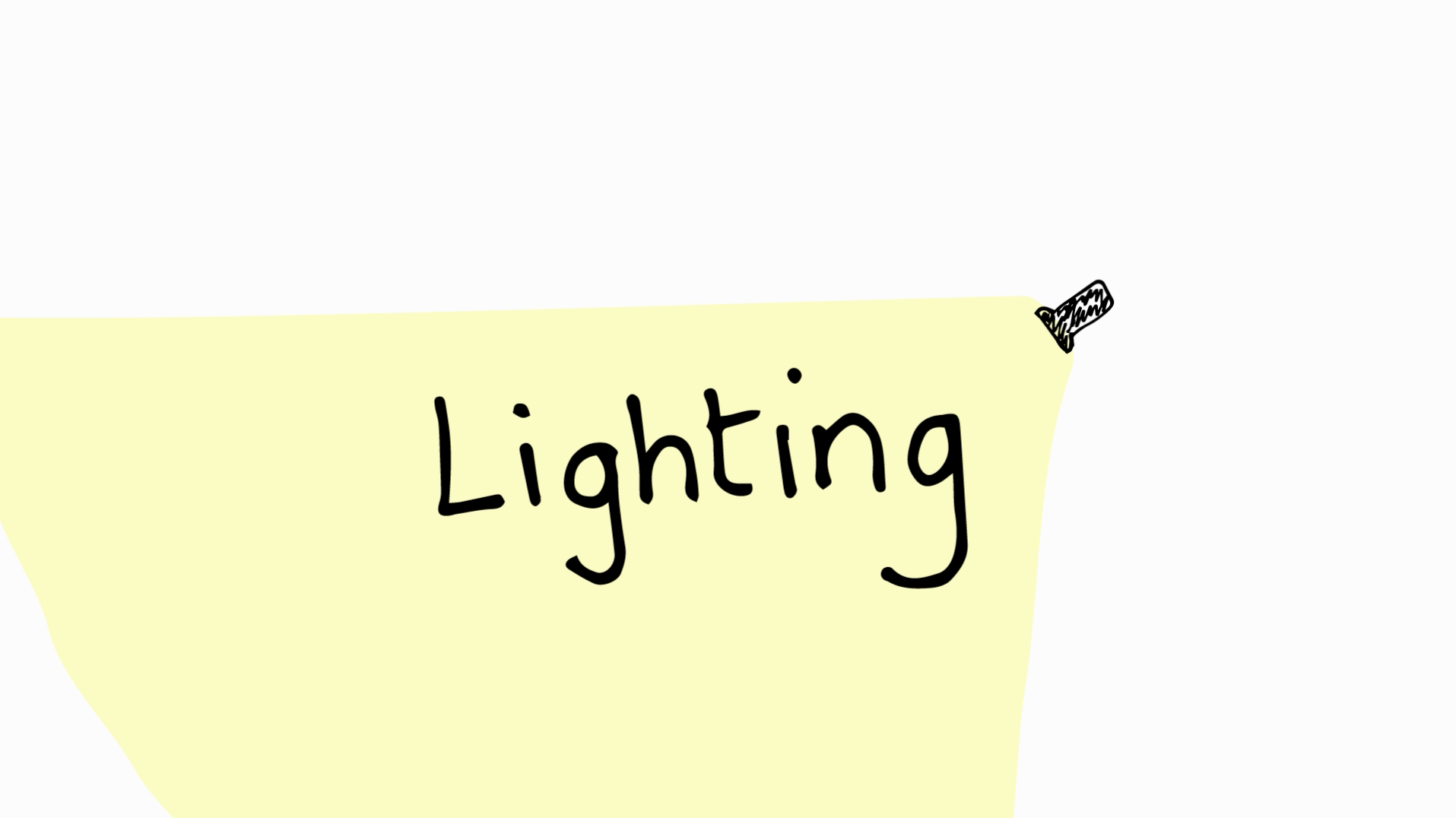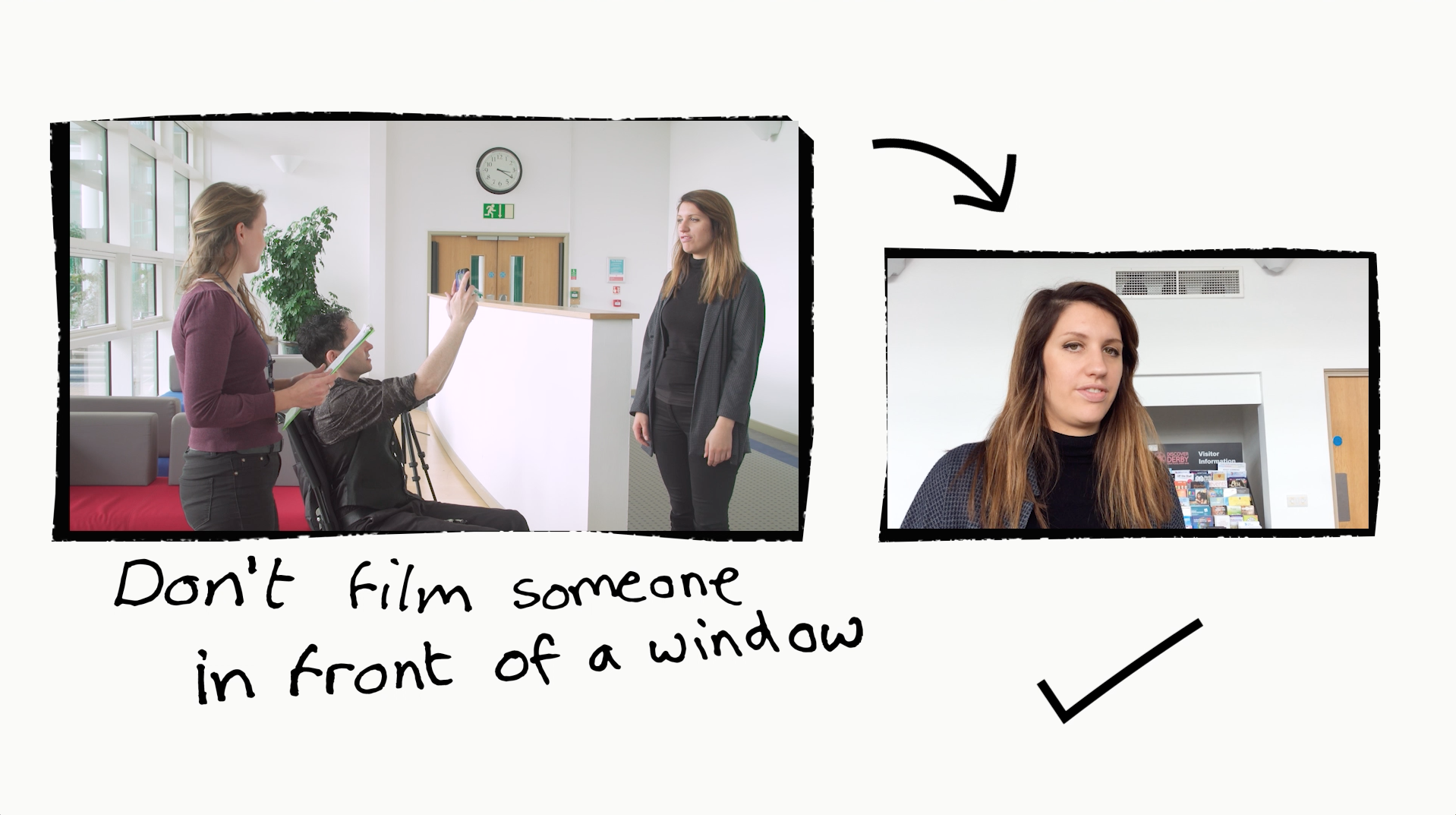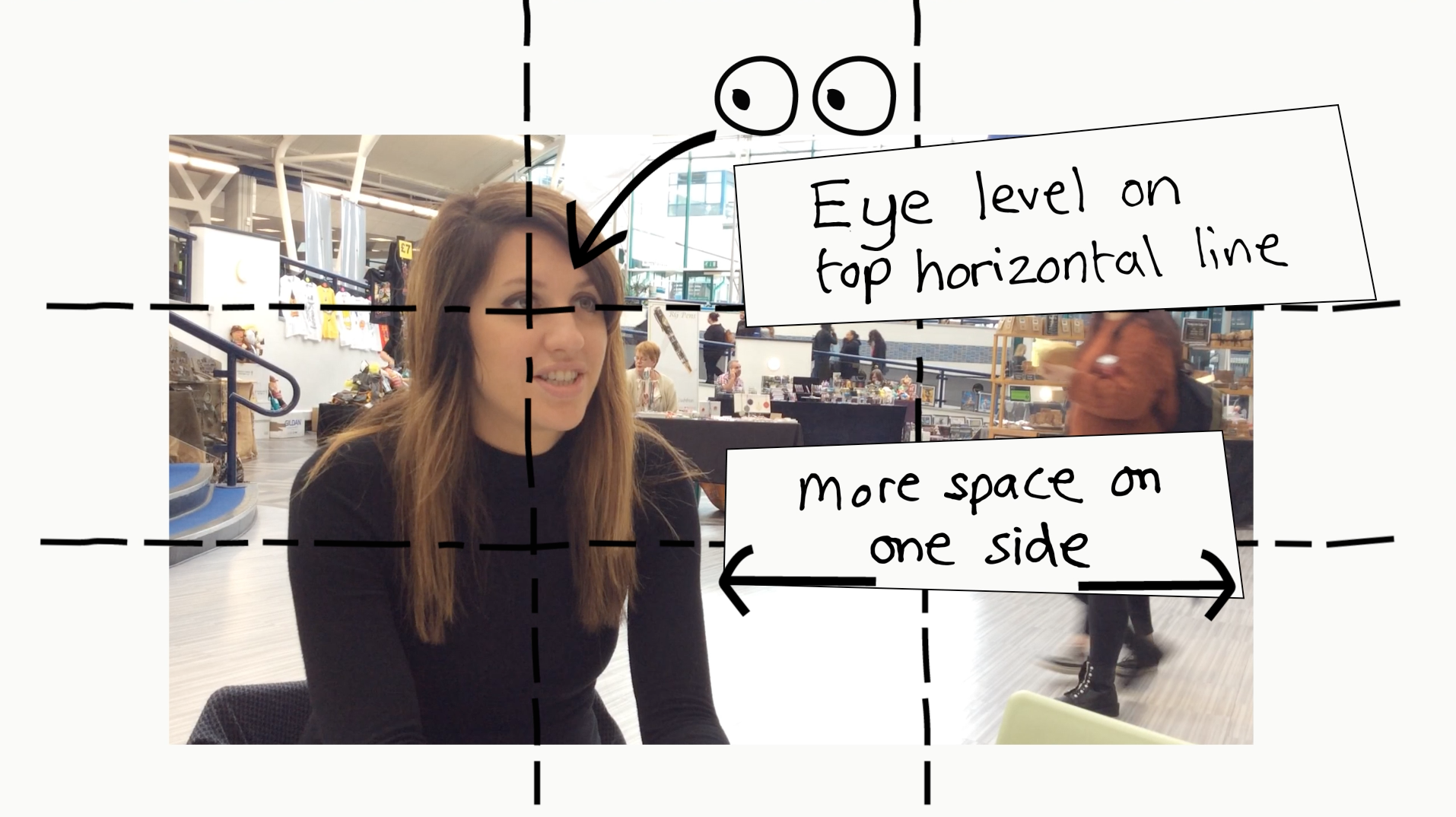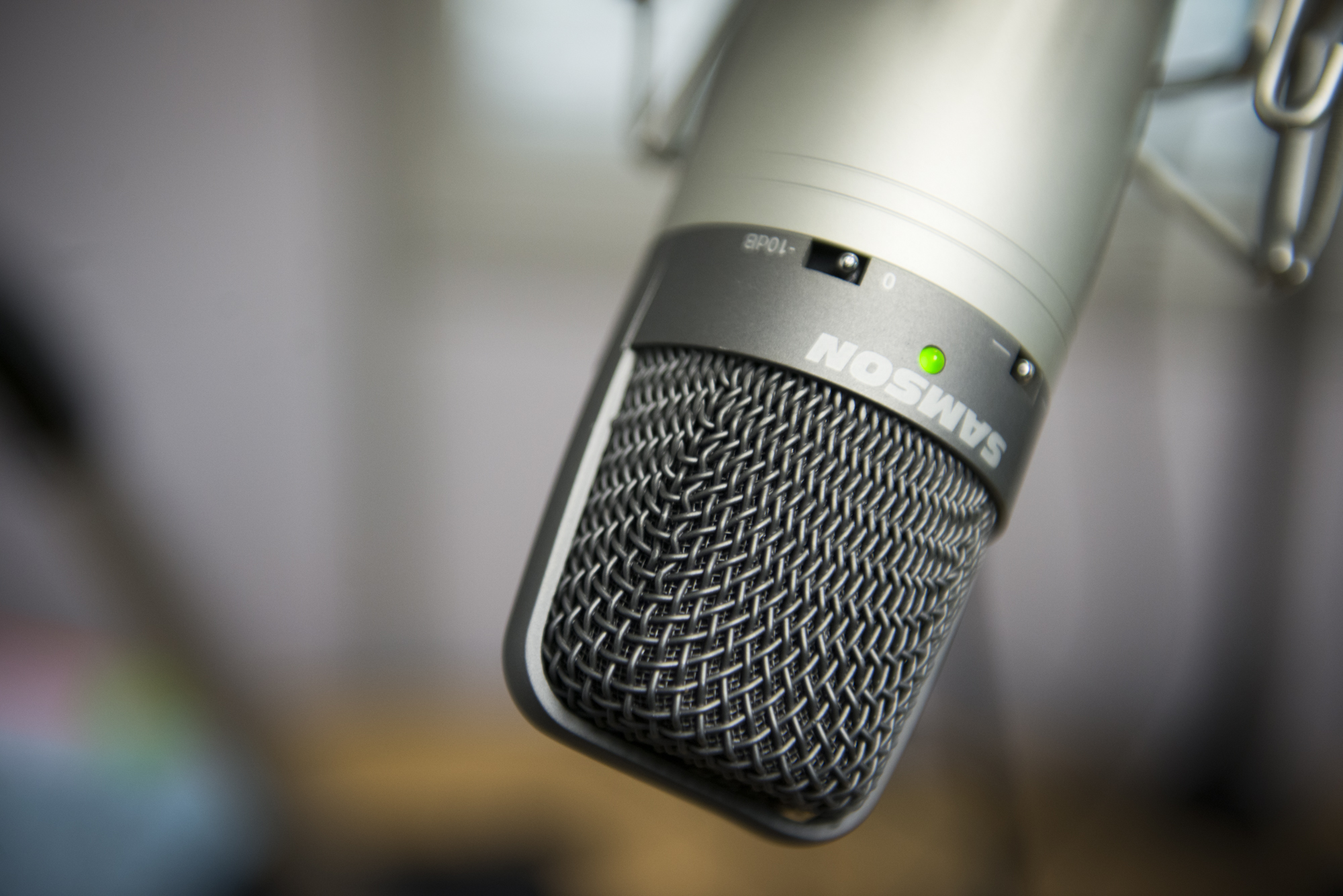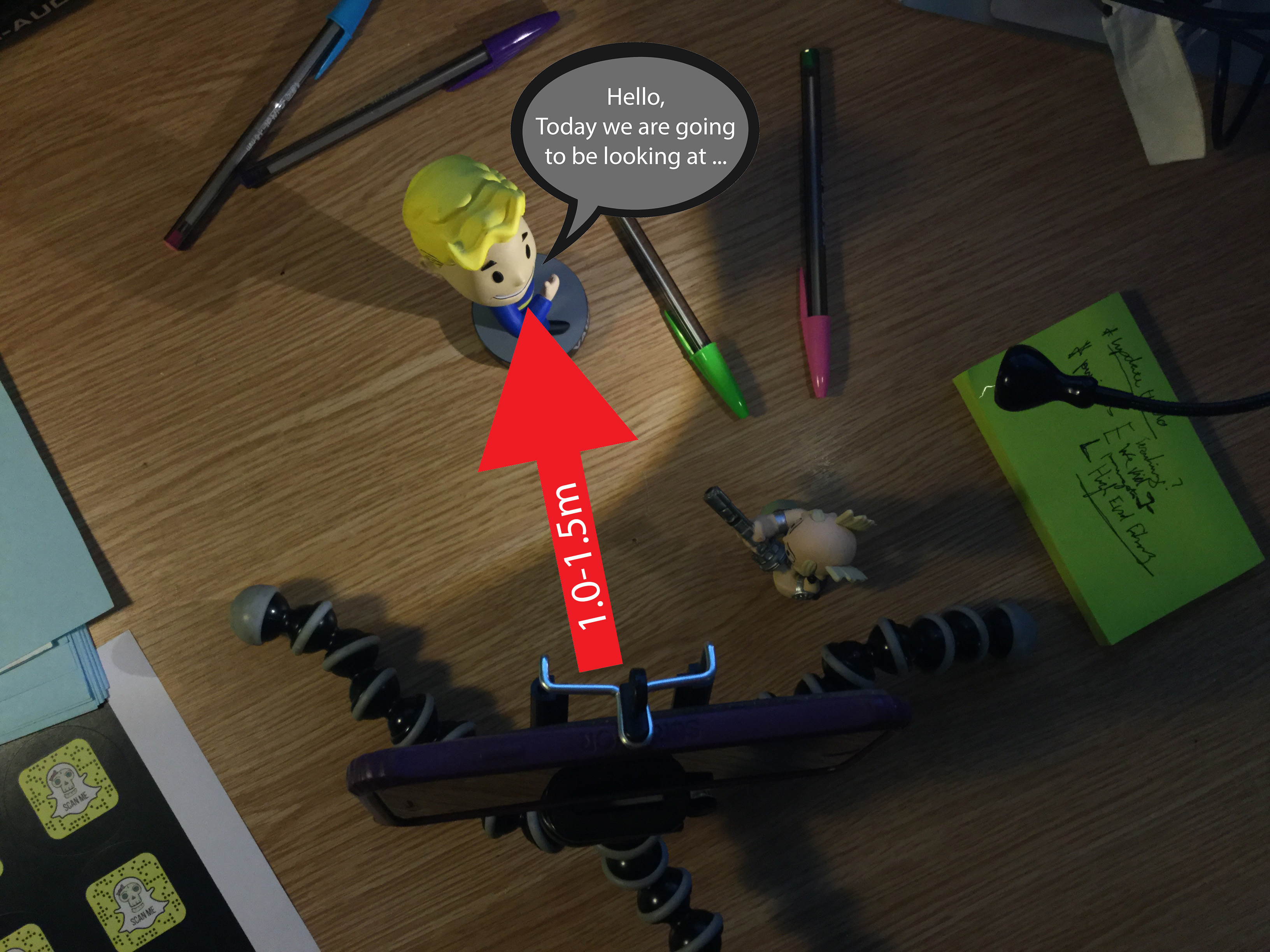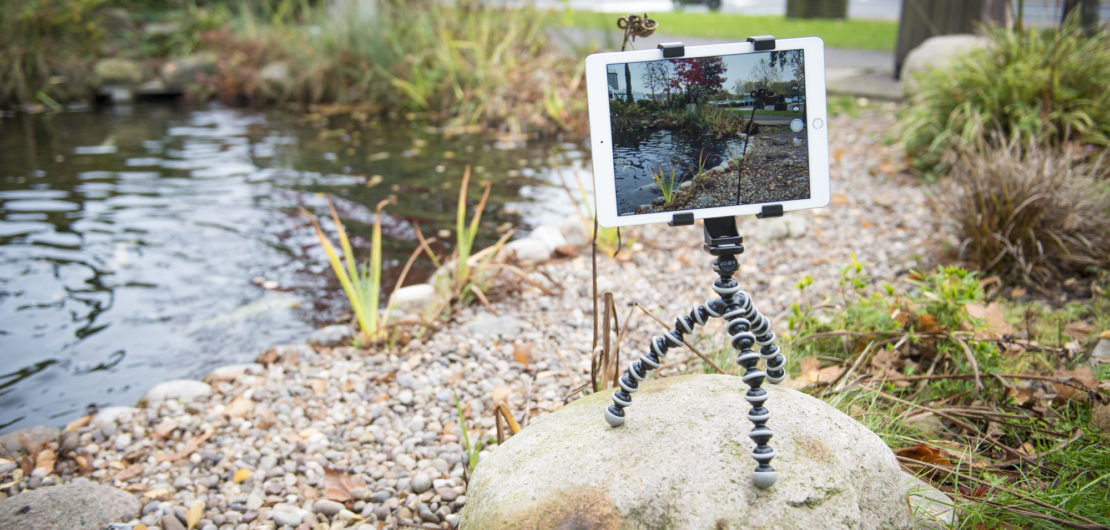
Production

Filming
The production process is essentially the filming of your video. This stage will be a lot easier if you have gone through the pre-production guidelines and planned for your video.
Before you start filming make sure you are confident with the equipment you are going to be using. Practise with it before you get to your location to save time when there.
When you are ready to start filming there are a few camera techniques that you should be following to create the best video possible.
You could even use a mobile device to film your video, as you usually have your phone or tablet close by.

Tips on getting the best for your video
Here are some techniques to get the best from your camera or mobile device, specifically looking at lighting, composition and audio. Getting these three elements right can dramatically change you video for the better.
Lighting
A well lit video is visually appealing, defined and colourful. Try to choose a good location and adjust the subject using these tips:
- Place your subject facing towards the light.
- Get plenty of light to stop the video looking dull.
- Use reflective surfaces which spread light around the room, giving nice soft shadows.
- Take advantage of the natural light by making sure it is shining on your subject as opposed to from one side or from behind.

Manually set focus and exposure
On some phones you'll be able to manually set the exposure of your shot. If you press and hold the screen it will bring up the AE/AF Lock function. Setting the Auto Exposure helps if you are moving from an outside to an inside scene, within the same shot, and will stop the phone from changing exposure during the shot.
Setting the focus is great for close-up shots as you can make sure the camera stays focussed on a particular point within the scene.
- If bright light is making your subject squint, slightly turn them from the light to make it more comfortable.
- Avoid shooting with your main light source behind your subject as this creates a silhouette.
- Avoid setting up directly under overhead lighting. Move the subject backwards or forwards to avoid the unwanted dark shadows this causes on your subject.
- Avoid dark locations as all cameras perform less well in low light.
Composition
This defines how your subject is positioned in the frame in relation to the environment they are in.
There are two factors to consider when composing your shot - the camera angle and where the subject is framed in the shot.
The camera angle is created from the camera's position in relation to the subject. Depending if the camera is looking up at or down on the subject, it will have different connotations for the viewer. Try to have the eye line of the subject on the same level as the camera, especially when filming an interview.
Using the guide of the rule of thirds when framing is a great way to compose a shot. If filming an interview place the subject on one of the horizontal lines looking into the frame.
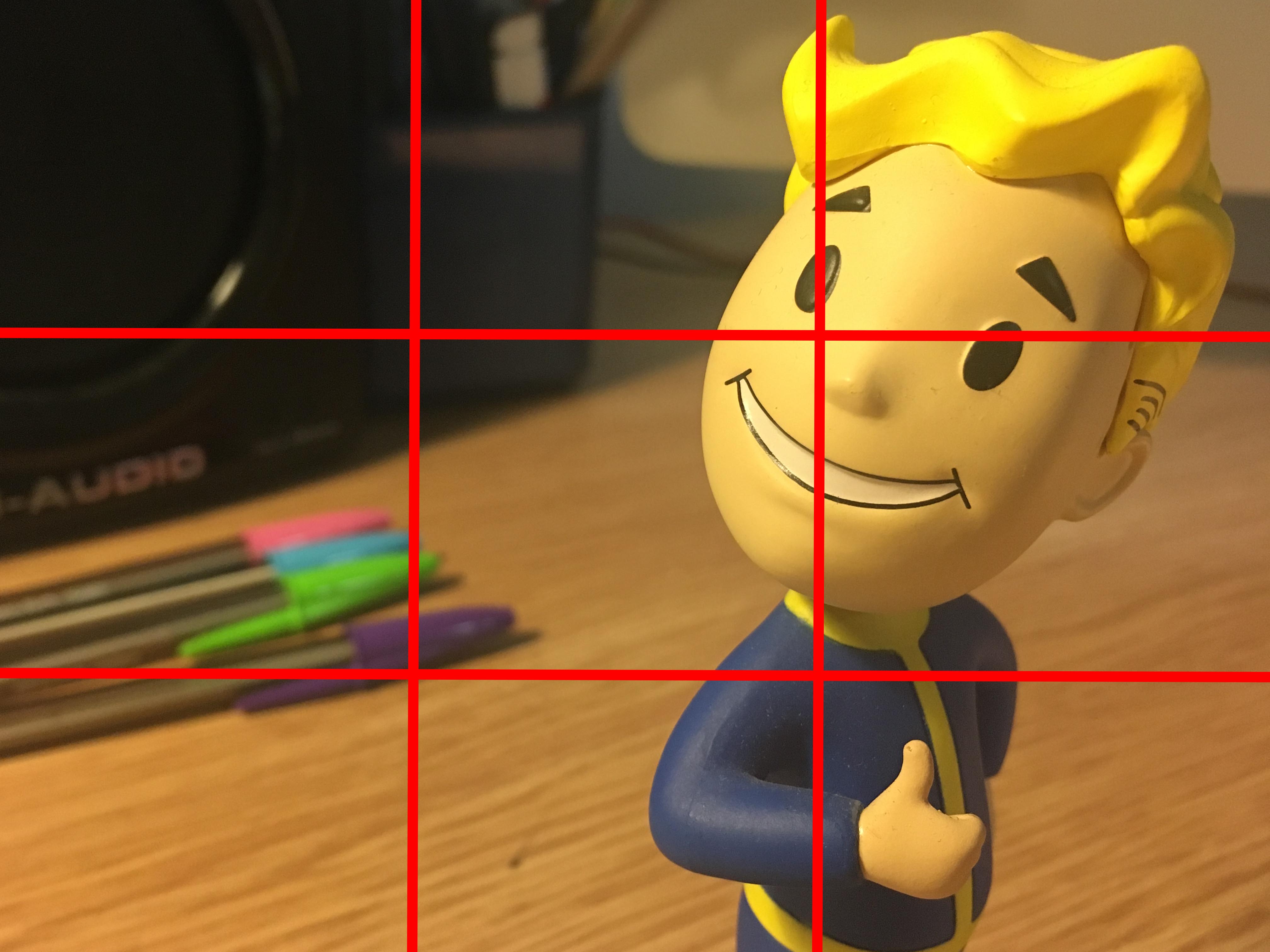
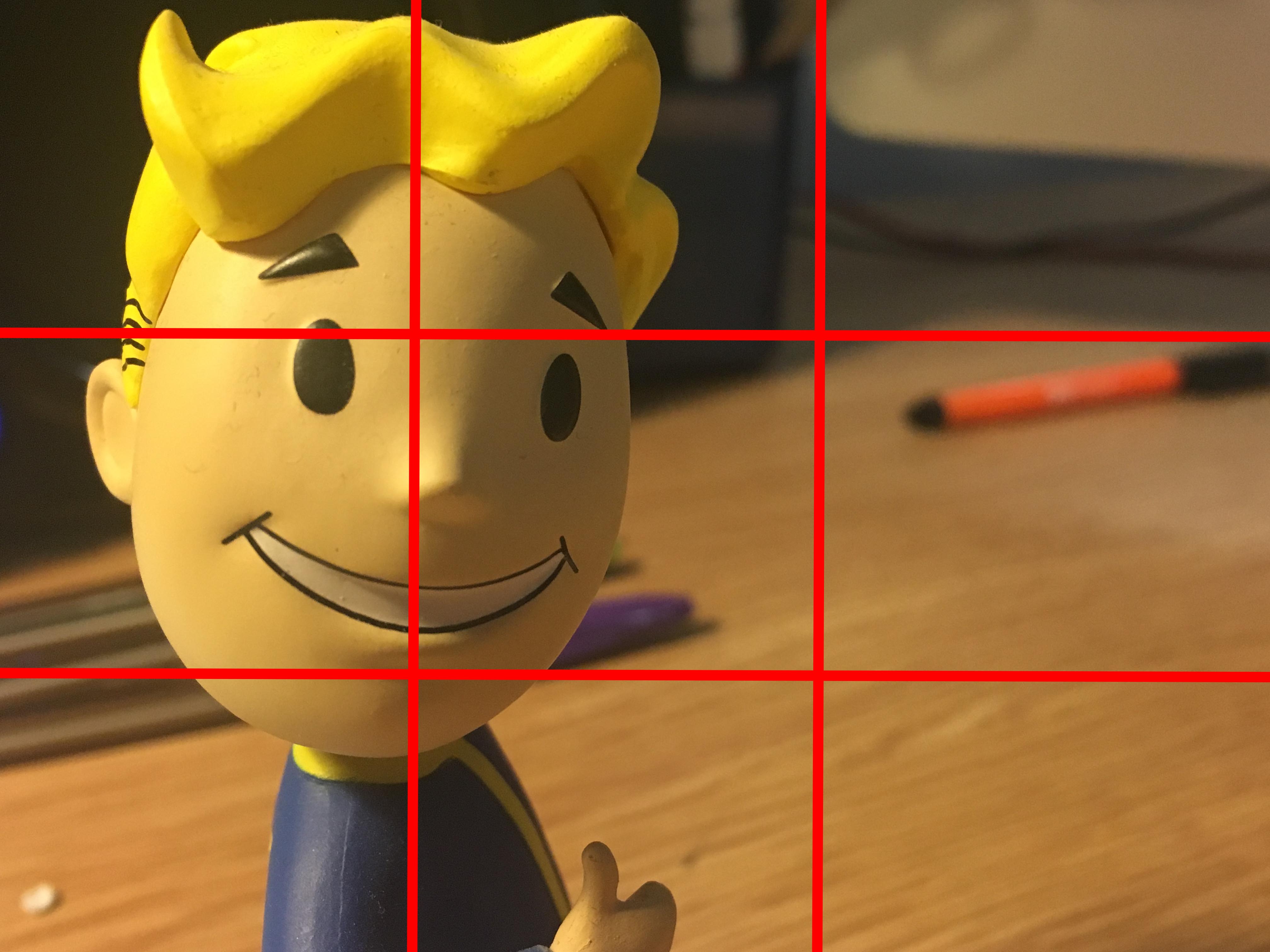
Composing a shot
Although you could show what you intended with one shot, it makes it more interesting to the viewer if you mix the shots up a bit and use shorter clips, as well as being able to pick out more detail within the scene.
When planning the shoot, think about what shots will complement the master shot and add to the message you are trying to get across. This could be as simple as getting a wide of your subject and then a close-up to show any detail.
Mobile devices don't have zoom lenses, they only have digital zoom features which will reduce the quality of the image. Therefore, try to find a position so you are close enough to your subject, so you don't have to use the zoom.
A video to demonstrate the different styles of shots you could use within your video to make it more interesting for the viewer.
Long/Wide shot
This shows the subject from top to bottom but is dominated by the surrounding area. A great way to establish a location.
Full shot
This shows the subject from top to bottom, with them filling the frame.
Medium
This is in-between a full shot and a medium shot.
Close-up
This shot fills the frame with the subject, for example the person's head/face. You will see the characters emotions and reactions well with this shot.
Extreme Close-up
This shot emphasises a particular area of the subject. If on a person it could be the eyes, to fully show their emotion to the viewer. Or to show a detail on the particular object being shown.
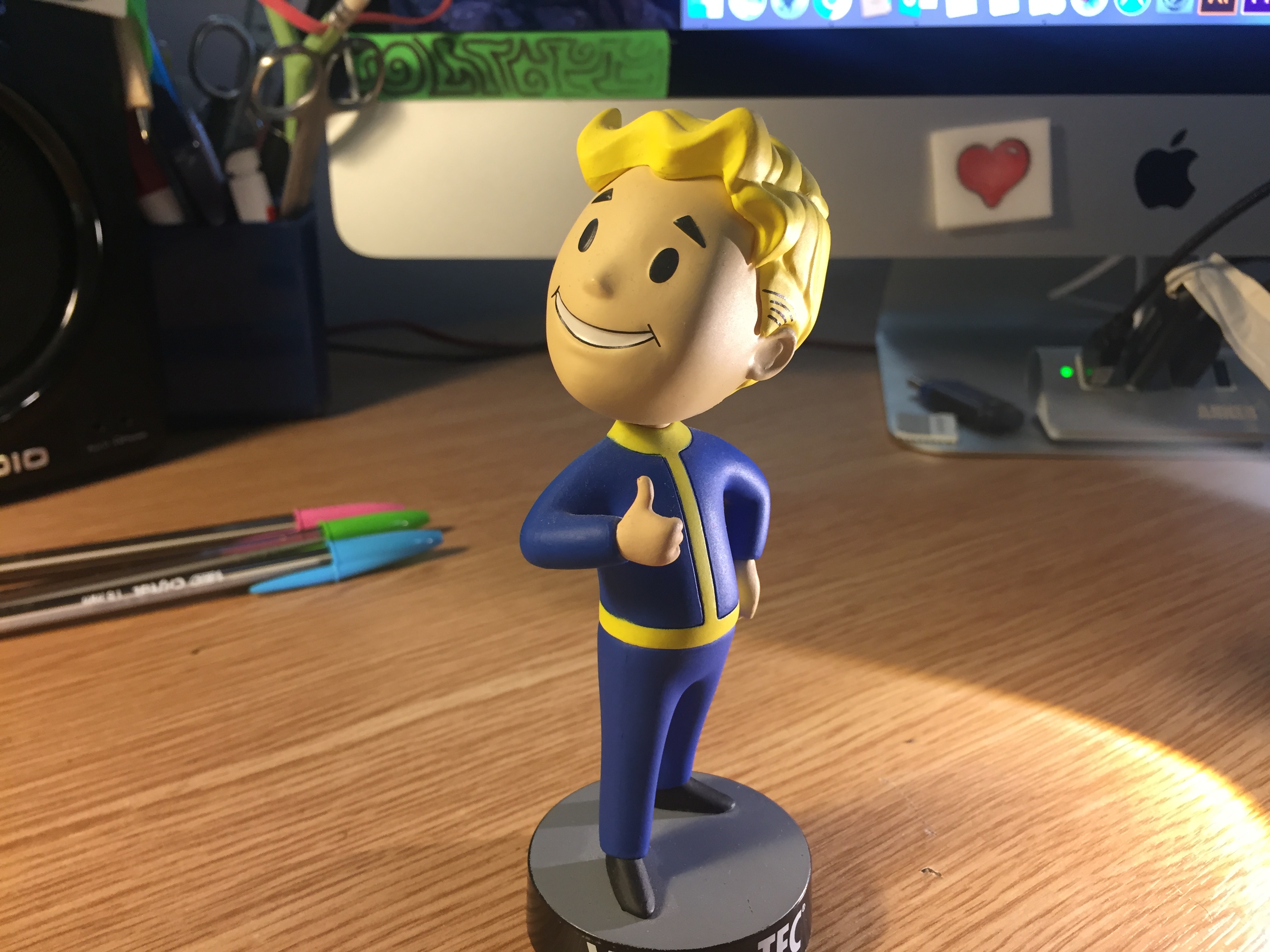



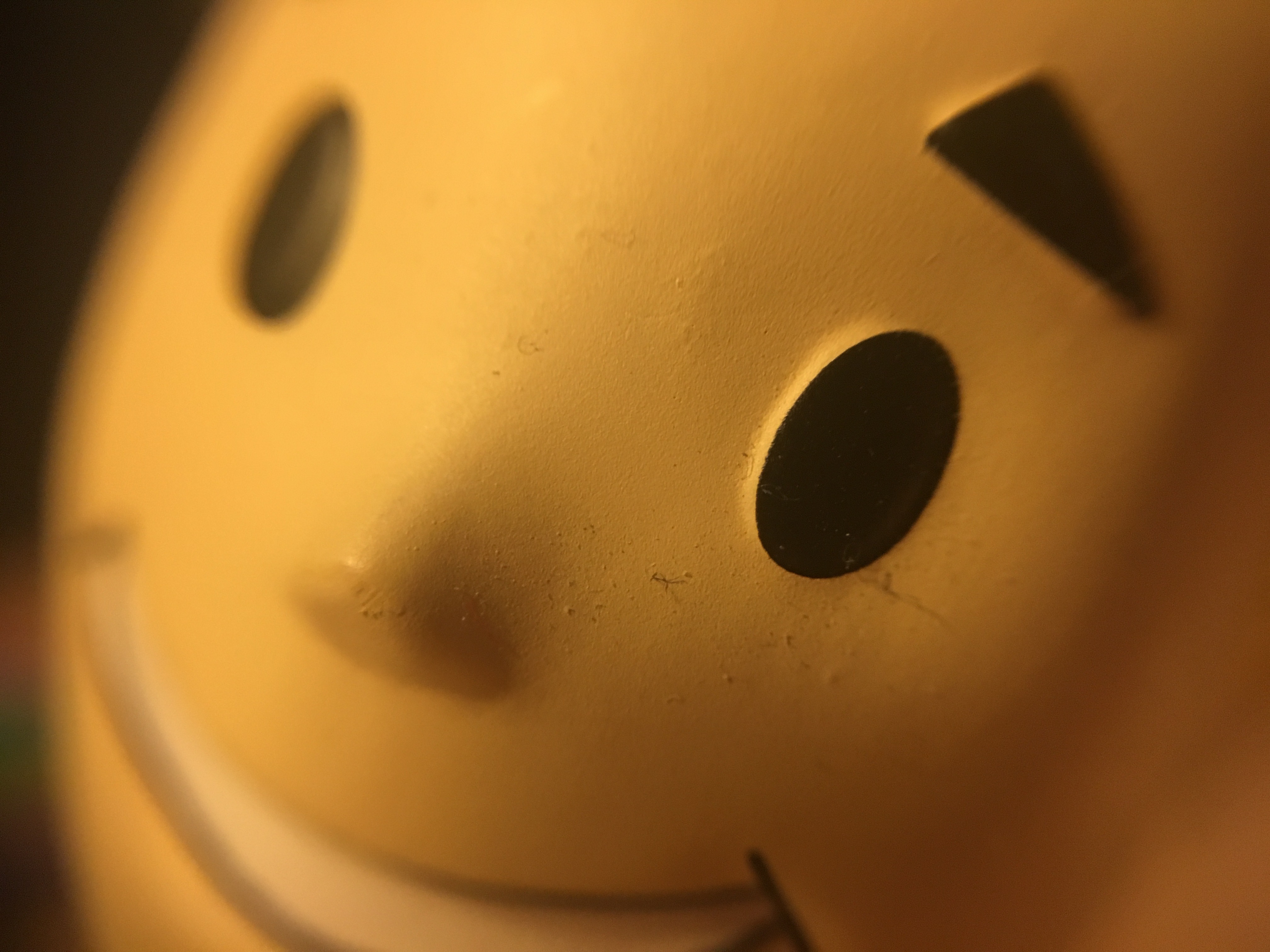
An overview of composition
- Place the camera at eye level with your presenter.
- Once framed avoid moving the camera during recording.
- Avoid framing where your subject is cut off at the neck, waist, knees or ankles.
- Hold the camera as steady as possible - lean against a wall or pole for support if possible - ideally a tripod of sorts is best.
- Consider a cheap phone holder (or make your own for free!) and rest it on a table to get a steady shot.
Sound
Microphone
Good audio is essential to any video, as it is important to convey the message as clearly as possible.
Use a clip mic if possible to get clear audio.
Lead and lag time
When you are interviewing someone it's a good idea to add lead and lag time at the beginning and end of each clip. This is when you leave a bit of time after you've hit record before you get the person to start talking and again once they've finished leaving a couple of seconds before stopping the recording.
Quality
It is worth considering the following factors that affect sound quality when shooting a video interview:
- The distance from the mic to your interviewee (ideally place your subject 100-150cm from the camera microphone). If using a clip mic this plugs into the camera/mobile device and then clips onto the interviewee.
- How quiet/loud (shy/confident) is your presenter?
- What is the level of background noise in your location?
- Always do a test recording to check audio quality.
- Move location if the audio is not clear.
